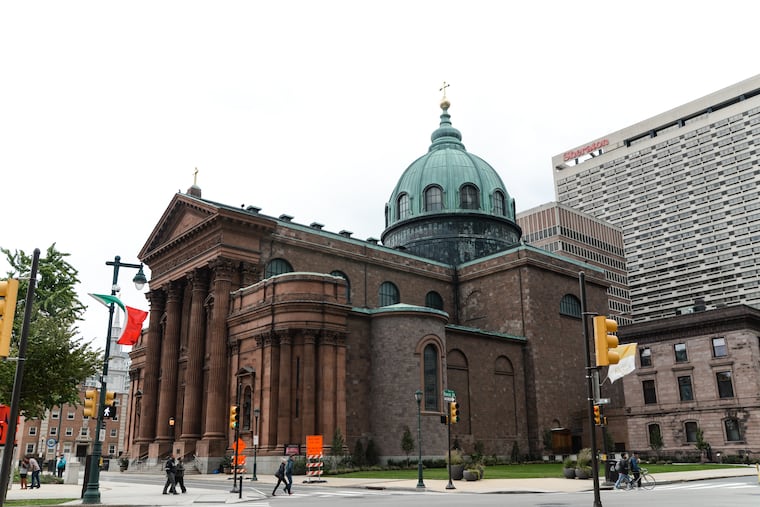In Philly, $39 million in clergy-abuse payouts so far — about $215,000 per damaged life | Maria Panaritis
Accountability has finally arrived. But at discount rates.

At first, the number seems huge: The Archdiocese of Philadelphia has paid out nearly $39 million to 181 sexual-abuse victims through the compensation fund it opened last year.
Wow, you might think to yourself. Finally, the institution whose leaders allowed generations of children to be destroyed by the sexual depravity of countless priests while bishops and monsignors helped cover it up, is paying up from the treasury it so immorally had fought to protect.
But don’t be fooled. This is a mammoth number only when you consider how difficult victims have found securing just compensation in one of the nation’s largest Catholic dioceses thanks to resistance by the church itself.
Accountability has arrived, yes. But at discount rates.
The $39 million tally, provided to me this week about the clergy-abuse compensation fund created after the 2018 grand jury report into Catholic clergy abuse in Pennsylvania, is well below what the five-county archdiocese would likely have paid in court — if it had not helped block a state law that would have allowed a flood of lawsuits.
The archdiocese’s Independent Reconciliation and Reparations Program (IRRP), which is still processing claims it accepted last year and might not be done for another 12 months, has paid 181 so far, totaling $38,925,000, former U.S. District Judge Lawrence F. Stengel, chair of the fund’s independent oversight committee, told me.
That averages out to about $215,000 each.
Meanwhile, victims in Los Angeles received an average $780,000 in 2007 and a single civil trial verdict that same year in Rockville Centre, N.Y., resulted in a $3.4 million settlement, according to the abuse clearinghouse Bishopaccountability.org.
If remaining awards are doled out at this or lower levels before the fund’s work has ended, the archdiocese will have significantly limited its financial liability.
“It is not a lot of money compared to the harm that’s been done,” said victims lawyer David Inscho, who helped settle for an undisclosed amount one of the few recent clergy-abuse civil court settlements with the Philadelphia Archdiocese allowable under Pennsylvania’s punishing civil statute of limitations.
He estimates that if every victim had been given the option of suing, “I would safely say that the 180 claimants would be paid four times that amount.”
Just how relatively inexpensive is this cleanup operation shaping up to be? For perspective, I looked to a story I wrote a few years back about settlements paid by the far smaller Diocese of Wilmington.
Wilmington was slammed by lawsuits after Delaware law was changed to allow child sexual-abuse victims to sue years after the statute of limitations had expired. Unlike Pennsylvania, lawmakers there gave victims the retroactive right.
The diocese ended up settling for $77 million while religious orders, whose priests may have worked in diocesan schools or churches, paid an additional $31.3 million. In all, about $110 million went to some 150 clergy sex-abuse victims. And that was with the diocese preempting jury verdicts by declaring bankruptcy.
The Philadelphia fund was announced in late 2018 to avoid its own version of a Wilmington payout scenario.
The Republican-controlled legislature in Harrisburg was under enormous pressure to allow retroactive lawsuits in the wake of a 2018 state grand jury report about church abuse across Pennsylvania. The creation of the fund helped defuse that.
“The deadline has passed but there are still a large number of claims still being processed,” Stengel told me last week. “My sense is that the Archdiocese has been transparent in its dealings with victims. It’s a terrible tragedy. The archdiocesan leaders acknowledge that. And I think this independent reparations program and the independent oversight committee have been successful. ... The offers that have been made through the program have almost all been accepted.”
On Tuesday, Stengel told me the fund received 614 claim requests last year. The program, however, is not considering claims involving priests who belonged to religious orders. That is another way that the fund limits justice for the abused in a way that civil courts would not.
“In Delaware, the church had $2.1 billion in assets that they protected. That’s little Delaware, not Philadelphia or anything. And they paid out $110 million," victims’ lawyer Thomas S. Neuberger, deeply involved in that process, said when I called him Tuesday. "Calculate the percentage on that. That’s what they protected. They’re doing the same thing in Pennsylvania. They’re protecting 95 percent of their assets through this publicity stunt. That’s all it is – a publicity stunt.”
Of course, $39 million is a heck of a lot more money than zero, and it has given some victims great relief to have the option of getting something without a court battle. Especially given how hard the archdiocese had worked for years against them to protect its purse.
As The Inquirer reported as far back as March 2002 — three years before the first major grand jury report into Catholic clergy abuse in Philadelphia and its four surrounding counties: “In one well-known case, the Archdiocese of Philadelphia countersued a victim’s parents, contending they were, in part, at fault for the abuse because they were negligent in supervising their child. The archdiocese’s spokeswoman said that decision was dictated by the church’s insurer — a circumstance that experts in the field say is not uncommon.”
In that chilling context, you may be forgiven for thinking $39 million is a far bigger penalty than it really is.